Appellations AOC, AOP, IGP: definitions and differences
AOC - AOP - History and definitions
| Appellation d'origine contrôlée | TheAOC is a French label that appeared in the middle of the last century. It was created to curb the phenomenon of counterfeiting that affected winegrowing estates between the wars, notably involving wines whose grapes came from neighboring regions. |
|---|---|
| Protected designation of origin | ThePDO is a European label, created in 1992 by the European Union along with two other labels (PGI, TSG) with the aim of bringing national labels to the European level. In France, AOC products automatically become either AOP or IGP. |
PDO: the European equivalent of AOC
The AOC and AOP designations are similar in nature, with the difference that theAOC is a French label, while theAOP is its European equivalent. They can be confused, their main difference being a geographical recognition (and a letter).
This label is a certification of a product's origin, production and processing, which are standardized according to the data set out in the specifications.
The PDO groups together European labels
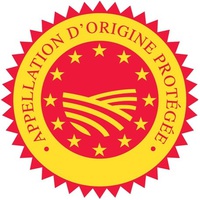
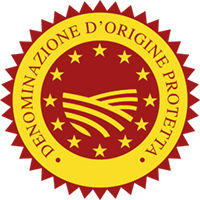
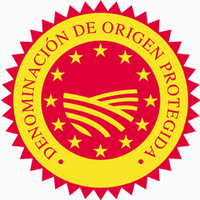
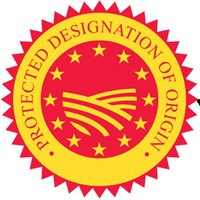
The aim of European labels is to federate equivalent labels - from the various member countries of the European Union - under an international certification system, in particular to promote the export market.
Denomination in other PDO countries
Some countries, such as France, Italy and Portugal, use the term contrôlée(AOC, DOC: Denominazione di origine controllata / Denominação de Origem Controlada), others, such as Spain and Germany, the term qualifiée(DOC: Denominación de Origen Calificada, QbA: Qualitätswein bestimmter Anbaugebiete), and finally the term protégée, as in England(PDO: Protected Designation of Origin). The latter term was chosen, which explains the cohabitation of the two AOC/AOP labels, unlike the label rouge, which seamlessly changed from French to European.
European nations thus share the same logo representing - it would seem - a cultivated field, with names written in the language of the respective country and a variation in color: red for AOP, blue for IGP.
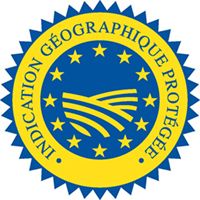
A word about PGI
The PGI is less restrictive than the PDO, and focuses primarily on the geographical area. To make a clear distinction between the two designations, it should be remembered that PDO requires production, processing and preparation to be subject to the constraints of the geographical area and carried out according to a defined know-how. The PGI requires that only one of these 3 stages, generally processing, be carried out in the geographical area concerned, with differences to be noted for wine.
Process for obtaining the AOC / AOP label
The AOP label certifies compliance with a set of specifications drawn up by a group of producers. These specifications vary from one product to another, from ham to cheese, and even between two cheeses from the same region. Some are very flexible, others much more restrictive.
The request for new PDO certification is a collective initiative. It involves a request from a number of producers wishing to highlight their know-how in a given area. These producers must compile a file containing various criteria (product name, description, geographical area, etc.) and submit it to the INAO, which, if it obtains the AOC label, then forwards the application to the Brussels Commission for the PDO label.
Consult the specifications for an AOC / AOP product
AOC / AOP specifications for French food products are made available to the public byINAO on the government website. To find them, simply enter"cahier des charges [produit] aoc" in your search engine, and the PDF document will appear in the first 2 results.
Labels have a cost
All certifications, including organic, incur costs for the producers who benefit from them. In particular, these costs are used to finance the audits required to maintain these labels. Even if this investment enables producers to increase their prices, it can still be an obstacle for small producers who produce quality products, but who don't necessarily have the means to switch to a PDO, or who don't wish to change their traditional production methods by rigorously following production stages that have always included nuances from one producer to another.
The advantages of PDO labels
These labels were created to assure the uninitiated consumer, who has no information about the producer other than the label, that the product he or she is holding is of quality, from the land, and made according to tradition.
PDO in all circumstances?
First of all, the PDO label does not cover all traditional food products. In some cases, when it does exist, a detail prevents it from being obtained. This is notably the case for Corsican charcuterie, which requires, for example, a Corsican breed of livestock to qualify as AOC/AOP Corsican charcuterie.
For others, let's take the example of an Emmental-type cheese from Switzerland. Let's skip the industrial products found in supermarkets, and concentrate on more traditional-looking cheeses that can be found, for example, in specialized grocery stores. As not everyone is lucky enough to know small-scale producers in Switzerland (or Germany), the best guarantee that the product is authentic is if it has a PDO label. However, if you're sure that your grocery store only selects quality products, you can disregard the label and trust your shopkeeper, who knows his suppliers, where they are located and will be able to tell you all about their work.
What about AB, Label rouge
Other labels, such as Label Rouge or AB (Agriculture Biologique ), retain their names, but are also subject to European Union control.
The rules for obtaining the Label Rouge and the Label d'Agriculture Biologique were relaxed when they came under European authority, permitting for example traces of GMOs. The French BIO (AB) label remains the best guarantee against the use of pesticides and GMOs in comparison with the Label Rouge and other labels, although regulations make it more permissive, and there are producers who maintain irreproachable ethics on a case-by-case basis.
A word about the STG label
A 4th European label exists under the acronym STG - Spécialité Traditionnelle Garantie - and guarantees a traditional composition in precise proportions, unrelated to geographical origin.


